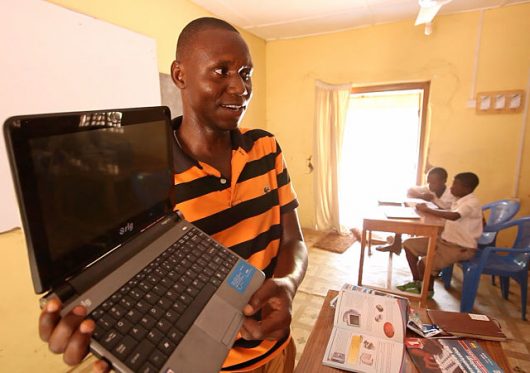Technological Innovations Are Providing Education Globally
 Around the world, rural and poor areas face the struggle to provide an education to their inhabitants. What makes matters worse is the difference in resources and environments poorer areas have access to compared to richer, largely technologically-driven communities.
Around the world, rural and poor areas face the struggle to provide an education to their inhabitants. What makes matters worse is the difference in resources and environments poorer areas have access to compared to richer, largely technologically-driven communities.
Since most informational and communication technologies (ICTs) used in education originate from high-income environments, some technology-enabled solutions may not be adequate in certain places where they do not work or where they are too expensive to be replicated or sustained. There is a digital divide in access to technology and access to reliable power, and there is also a second digital divide in the degree to which the skills and abilities of people can improve from access to such technology.
Tackling the Digital Divide
On the bright side, technologists and education leaders are adapting different technologies to resolve this issue. Some important principles to incorporate in ICTs in low-income, remote educational environments are to prioritize sustainability, to focus on what devices can make possible rather than on what the devices can do and to start trying to implement tools where things are less likely to work first in order to identify possible issues.
One example of how technological innovations are providing education would be the MobiStation, a solar-powered “classroom in a suitcase.” Its projector and offline educational content provide innovative learning environments for children in Uganda. Another example would be BRCK, a connectivity device that addresses the lack of electricity and internet connections in Kenya.
How Technological Innovations Are Providing Education
There are various issues that come with providing education in the context of poor communities, thus there are many approaches that people have taken to implementing various solutions. The following are some examples that show how technological innovations are providing education by supplementing for the lack of access to resources with “old” technologies:
- Interactive Radio Instruction’s broadcasts are able to provide instructions to teachers and students in many remote classrooms simultaneously by just making use of radios.
- Similarly, Interactive Educational Television provides many students in the Amazon with an education by using televisions where teachers are not available. Also similarly, the Tata Sky Classroom is providing learning at a distance to students in India through television, radio, home video as well as on demand internet video.
- Same language subtitling of Bollywood movies is helping millions of “low literate” people in India acquire reading skills.
- Mobile phones in remote communities in Pakistan, Tanzania and Papua New Guinea provide access to educational content, alleviating some of the challenges that come with isolation of peers as well as lack of textbooks and other teaching materials.
There are also some offline tools that are not affected by the sporadic and unreliable internet connectivity in many poor regions. Low-cost e-readers distribute many books in digital formats to reading devices by taking innovative methods to cache online content for offline use. Affordable video cameras (like those found on mobile phones) provide Indonesian teachers a way of giving feedback to and sharing with other teachers their curricula.
In Cambodia, World Eduation, Inc. is working with Kampuchean Action for Primary Education to monitor students’ progress through reading material to identify those that need extra attention. The program makes use of networked laptops and encourages families to read at home.
Bringing Technologies to New Areas
Resources are spreading and developing in many areas that do not currently have them. Myanmar is slowly connecting to the internet and providing electricity to its rural regions with the help of global players like Ericsson, which is working to connect schools in Myanmar.
Furthermore, HP has set up seven Future Classrooms in India. These Future Classrooms, cloud-enabled classrooms that come with HP hardware and internet access and provides access to educational software tools like HP Video Book, are helping over 3,200 students and job seekers in India. SIMS is another program that comes with the package; it helps students manage their courses. Yet another program, HP Life, consists of 25 free, self-paced courses in seven languages. Its classes include business, IT and even entrepreneurship skills.
Even more, technological innovations are providing education by optimizing the number of people who can use educational tools. Low-cost versions of digital whiteboards and projectors allow up to 50 students in a single classroom to use one computer independently as long as they each have their own mouse.
The Hole in the Wall project places shared outdoor computing facilities in slum communities to educate children without formal schooling. Additionally, the Varkey Foundation, Dubai Cares and the Ghanaian Ministry of Education are collaborating to provide 40 schools in Ghana with a satellite dish, a projector, a solar-powered computer, a modern electronic blackboard and a trained instructor to provide biweekly training workshops for teachers.
Solutions for the Future
There are several solutions that develop educational content and tools locally. People in Afghanistan are making use of low end mobile phones to create resources that not only can be used by low literate users but also are relatively easy to develop. Also, Open Learning Exchange installs solar-powered Basic e-Learning Libraries (BeLLs) onto small computer hard drives in Ghana.
While there are many barriers to making current educational technologies useful to poor communities without access to electricity or internet, there are also many innovations that will change this. Technological innovations are providing education globally and will continue to help create a better future for the world.
– Connie Loo
Photo: Flickr
